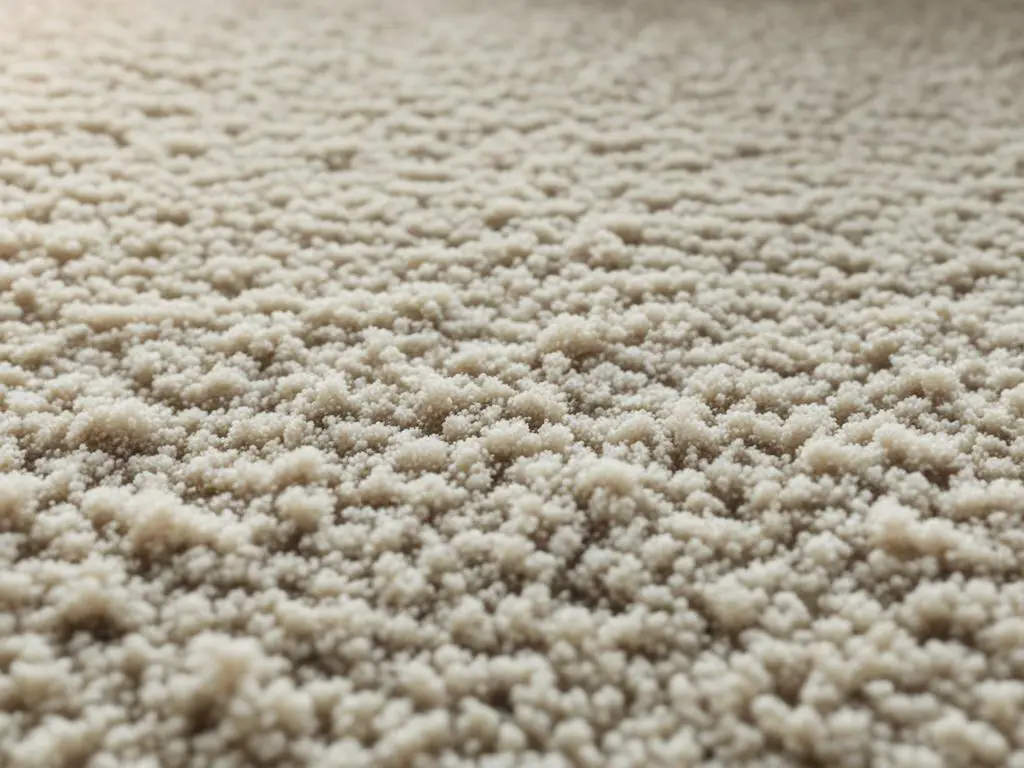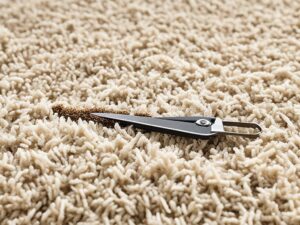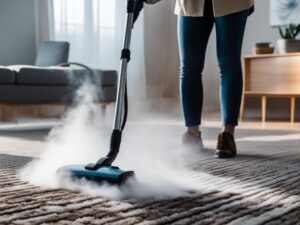Stains on carpets can be stubborn, and it can be frustrating to see them reappear even after you’ve put in the effort to clean them. Understanding why stains reappear on carpets is the key to preventing and addressing this common issue.
There are two main reasons why stains may return on your carpet. The first reason is wicking, which occurs when a liquid seeps past the carpet fibers and into the backing or pad of the carpet. This liquid then wicks its way back up to the surface, bringing the stain along with it. The second reason is residue left behind from cleaning products. If these residues are not properly rinsed out, they can attract dirt and cause stains to reappear.
Key Takeaways
- Stains on carpets can reappear due to wicking and residue from cleaning products.
- Wicking occurs when a liquid seeps past the carpet fibers and wicks back up to the surface, bringing the stain with it.
- Residue stains can occur when cleaning products are not properly rinsed out and attract dirt, causing stains to reappear.
- To address wicking stains, techniques such as heat transfer and soaking the area may be necessary.
- Preventing residue stains involves using non-residual carpet cleaning spotter and hiring professional cleaners that use detergent-free products.
Understanding Wicking
Wicking is a common cause of stain reappearance on carpets. It occurs when a liquid, such as a spilled beverage or pet urine, seeps past the carpet fibers and into the backing or pad of the carpet. Even if the stain appears to be removed from the surface of the carpet, it can remain trapped beneath the surface. When the carpet is cleaned, the liquid gradually wicks its way back up to the surface, causing the stain to reappear. This can be a challenging issue to address because the stain is not easily accessible for cleaning. However, there are solutions such as performing a heat transfer using vinegar and water, soaking the area with a cleaning agent and water, or even removing and replacing the carpet pad.
Dealing with Residue Stains
Residue stains on carpets can be a real headache to deal with. These stains occur when cleaning agents or detergents are not properly rinsed out of the carpet fibers. Whether you’re using over-the-counter carpet cleaning products or relying on professional cleaners, soap residue can be left behind, leading to the reemergence of stains.
These residues have a sticky texture that can attract dirt particles, making the stains more visible and harder to remove. So, how can you effectively deal with residue stains and prevent them from reappearing?
Use Detergent-Free Cleaning Products
To avoid soap residue buildup, it’s essential to opt for detergent-free cleaning products when spot cleaning your carpets. These products are specifically formulated to leave no residue behind, ensuring a thorough and residue-free cleaning process.
When selecting a carpet cleaning spotter or solution, look for ones that are specifically labeled as non-residual. These cleaning products are designed to break down stains without leaving any sticky residue that could attract dirt.
Hire Professional Carpet Cleaning Services
Another effective solution for dealing with residue stains is to hire a professional carpet cleaning company that uses detergent-free products. These professionals have the expertise and equipment to provide a deep and thorough cleaning without leaving any residue behind.
Professional carpet cleaners can identify the residue stains and apply the most appropriate cleaning methods and solutions to eliminate them. They can also ensure proper rinsing of the carpet fibers, preventing any residue buildup that could lead to stain reappearance.
Preventive Measures
Preventing residue stains is just as important as effectively dealing with them. Here are some preventive measures you can take:
- Regularly vacuum your carpets to remove dirt and debris that could contribute to staining.
- Avoid over-wetting your carpet during cleaning. Excess moisture can exacerbate the residue problem.
- Address spills and stains promptly to minimize the chance of residue formation.
By following these preventive measures and using detergent-free cleaning products or hiring professionals, you can effectively deal with residue stains and keep your carpets looking fresh and stain-free.
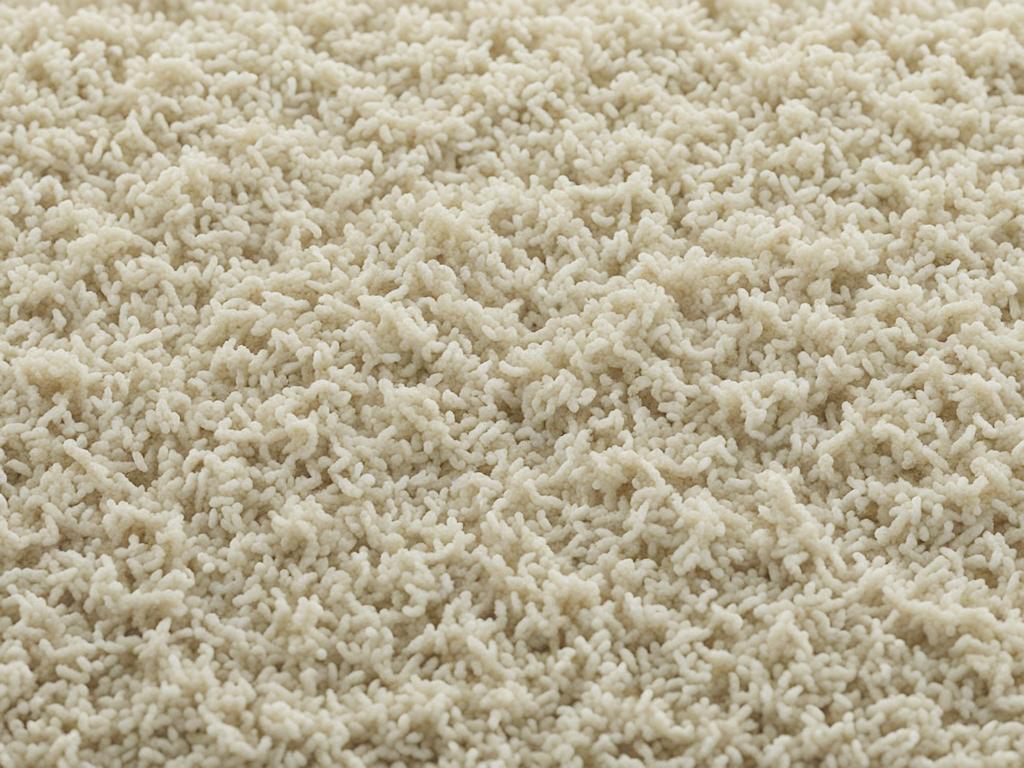
Prevention and Maintenance Tips
To prevent stains from reappearing on carpets, it is important to follow some prevention and maintenance tips.
- Regularly vacuum the carpet: Vacuuming the carpet on a regular basis helps remove dirt, dust, and debris that can contribute to the formation of stains.
- Address spills and stains immediately: Promptly attend to any spills or stains on the carpet to prevent them from seeping deep into the fibers. Blot the affected area gently with a clean cloth or paper towel to absorb as much liquid as possible.
- Use a non-residual carpet cleaning spotter: When treating stains, use a non-residual carpet cleaning spotter specifically designed to remove stains without leaving behind any residue. This helps prevent the attraction of dirt and the reappearance of stains.
- Avoid over-wetting the carpet: When cleaning the carpet, avoid saturating it with excessive amounts of water or cleaning solution. Over-wetting can push the stain deeper into the carpet fibers or cause the backing or pad to become moist, leading to wicking and stain reappearance. Use a moderate amount of cleaning solution and ensure thorough drying.
- Have carpets professionally cleaned: Schedule regular professional carpet cleaning sessions with a reputable company that uses detergent-free products. Professionals have the expertise and equipment to effectively deep clean the carpet, ensuring thorough rinsing to remove any residue and prevent stain reappearance.
By following these tips and incorporating them into your regular carpet cleaning routine, you can maintain a fresh and stain-free carpet.
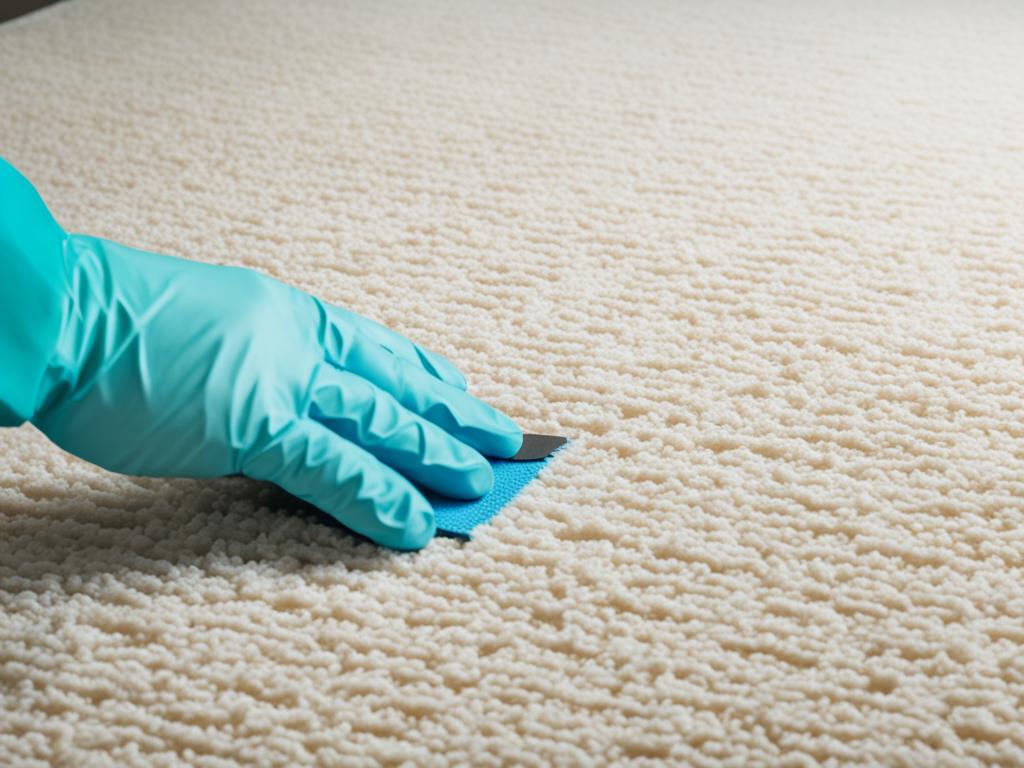
Recommended Carpet Cleaning Schedule
| Activity | Frequency |
|---|---|
| Regular vacuuming | At least once a week |
| Addressing spills and stains | Immediately |
| Using a non-residual carpet cleaning spotter | As needed for spot treatment |
| Professional carpet cleaning | Every 12-18 months |
Conclusion
Stains reappearing on carpets can be a frustrating experience for homeowners, but understanding the reasons behind it can help prevent and address the issue effectively. The main culprits of stain reappearance are wicking and residue left behind from cleaning products.
To address wicking stains, techniques such as heat transfer, soaking the area, or even replacing the carpet pad can be employed. These methods allow for a deeper cleaning and help eliminate the trapped stains beneath the surface.
Preventing residue stains is equally crucial. Using a non-residual carpet cleaning spotter during spot cleaning, and opting for professional carpet cleaning companies that use detergent-free products, can help avoid residue buildup. Additionally, regular vacuuming and immediate action on spills can significantly contribute to maintaining a fresh and stain-free carpet.
By implementing these carpet stain removal tips, effective carpet cleaning techniques, and prevention methods, homeowners can keep their carpets looking their best and avoid the frustration of stains reappearing. Follow these practices for a cleaner, healthier, and more aesthetically pleasing carpet.
